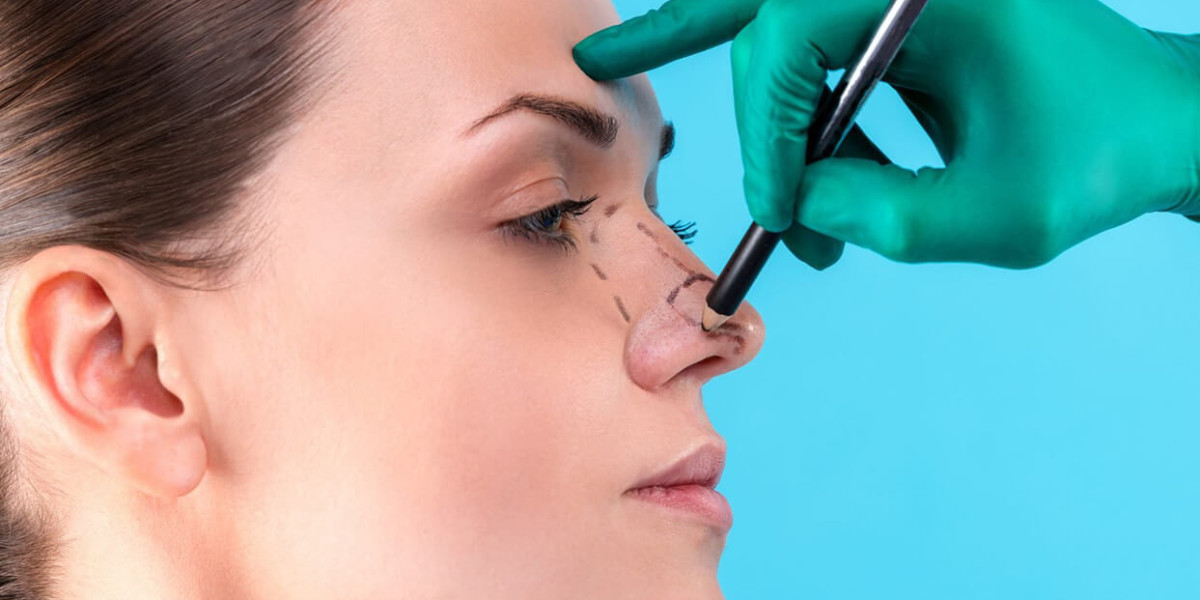Rhinoplasty, commonly known as a nose job, is a highly specialized surgical procedure aimed at reshaping the nose for cosmetic or functional reasons. In Islamabad, the growing demand for rhinoplasty has led to a variety of surgical techniques being offered by skilled plastic and ENT surgeons. Among these techniques, open and closed rhinoplasty are the two primary approaches. Understanding the differences between them is crucial for patients seeking the best outcomes. Surgeons in Islamabad emphasize that choosing the right method depends on individual goals, nasal anatomy, and the complexity of the case. Rhinoplasty in Islamabad offers individuals the chance to enhance their nose shape and boost facial harmony with expert care.
Understanding the Two Approaches
Rhinoplasty techniques are generally categorized into open and closed procedures. Both aim to enhance nasal aesthetics or function, but they differ in how surgeons access and modify the nasal structures.
Open Rhinoplasty involves a small incision made across the columella, which is the tissue separating the nostrils. This approach allows the surgeon to lift the nasal skin, providing a clear and unobstructed view of the underlying cartilage and bone.
Closed Rhinoplasty, on the other hand, uses incisions made entirely inside the nostrils, leaving no external scars. The surgeon works through these internal incisions to reshape the nose, relying on experience and skill to navigate the limited visibility.
Open Rhinoplasty in Detail
Open rhinoplasty is often recommended for patients who require significant nasal reshaping, correction of asymmetry, or revision surgery. The key advantage of this approach is the enhanced visibility and access it provides. Surgeons can precisely manipulate bone, cartilage, and soft tissues, which is especially important in complex cases such as:
Correcting severe nasal deformities
Reducing a prominent nasal hump
Refining the nasal tip
Performing reconstructive procedures after trauma
Islamabad surgeons highlight that open rhinoplasty allows for greater precision in sculpting the nose and predicting the final results. Although the procedure involves a small external scar, it typically heals well and becomes barely noticeable over time. Patients can expect moderate swelling, bruising around the eyes, and a slightly longer initial recovery period compared to closed rhinoplasty. However, the long-term results are often highly satisfactory, particularly for complex nasal corrections.
Closed Rhinoplasty in Detail
Closed rhinoplasty is favored for patients seeking minor adjustments or subtle enhancements. Since the incisions are hidden inside the nostrils, there is no visible scarring, which can be a major consideration for many individuals. Typical applications of closed rhinoplasty include:
Narrowing the nasal bridge
Refining the nasal tip
Adjusting nostril size
Correcting minor asymmetries
One of the benefits of closed rhinoplasty is a shorter recovery period with less swelling and bruising compared to the open technique. However, the limited visibility makes the procedure more technically challenging. Surgeons must rely on experience, skill, and pre-operative planning to achieve precise results. For minor reshaping cases, closed rhinoplasty offers an effective, minimally invasive solution without compromising aesthetic outcomes.
Choosing the Right Technique
The choice between open and closed rhinoplasty depends on several factors, including:
Severity of the Nasal Issue: Complex deformities or revision cases generally benefit from open rhinoplasty.
Desired Outcome: Patients seeking subtle changes may achieve their goals with closed rhinoplasty.
Surgeon Expertise: Some surgeons specialize in one approach, while others are proficient in both. Selecting a surgeon experienced in the chosen method ensures better results.
Recovery Considerations: Open rhinoplasty may involve more initial swelling and a slightly longer healing process, while closed rhinoplasty often allows for a quicker return to daily activities.
During consultations in Islamabad, surgeons carefully evaluate the patient’s nasal structure, facial proportions, and personal goals before recommending the most suitable technique. They emphasize that both methods can yield excellent results when performed by a skilled professional.
Recovery and Post-Operative Care
Recovery after either procedure involves initial swelling and bruising, typically subsiding within one to two weeks. Patients are advised to follow post-operative instructions closely, including avoiding strenuous activities, protecting the nose from trauma, and attending follow-up appointments. The final nasal shape continues to refine over several months, with subtle improvements often observed up to a year after surgery.
Conclusion
Open and closed rhinoplasty each have distinct advantages, and the choice depends on the complexity of the case, desired outcomes, and surgeon expertise. Islamabad surgeons highlight that both techniques can achieve natural, harmonious results when tailored to the patient’s anatomy and goals. By understanding the differences between these approaches and consulting a skilled, experienced surgeon, patients can make informed decisions and achieve satisfying results that enhance both appearance and nasal function.













